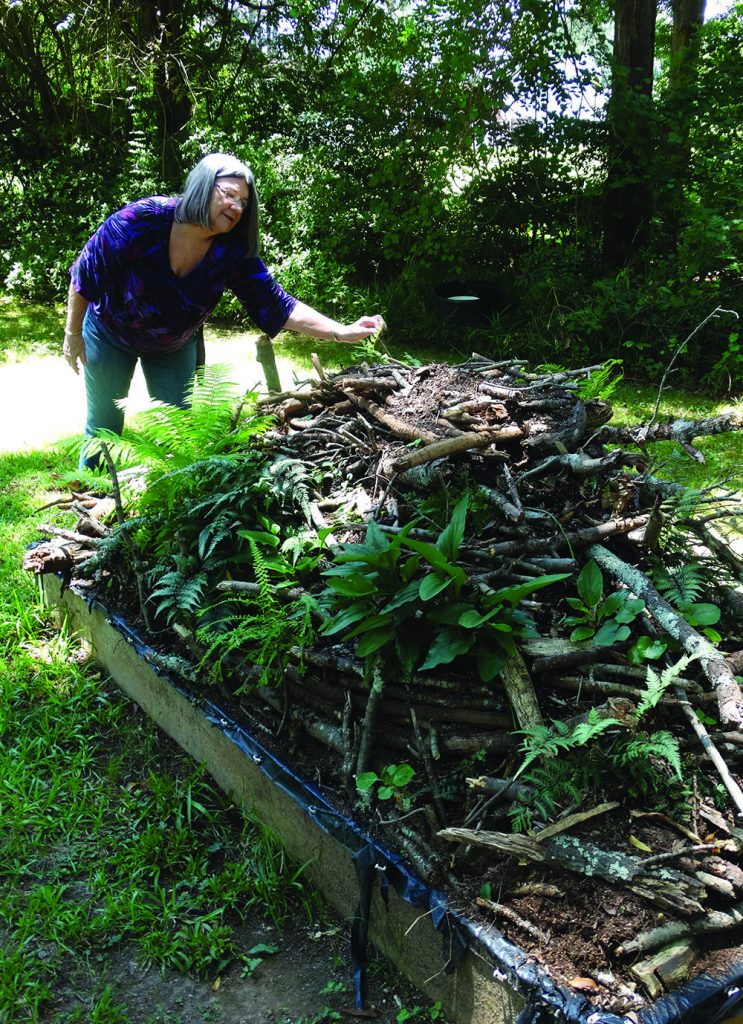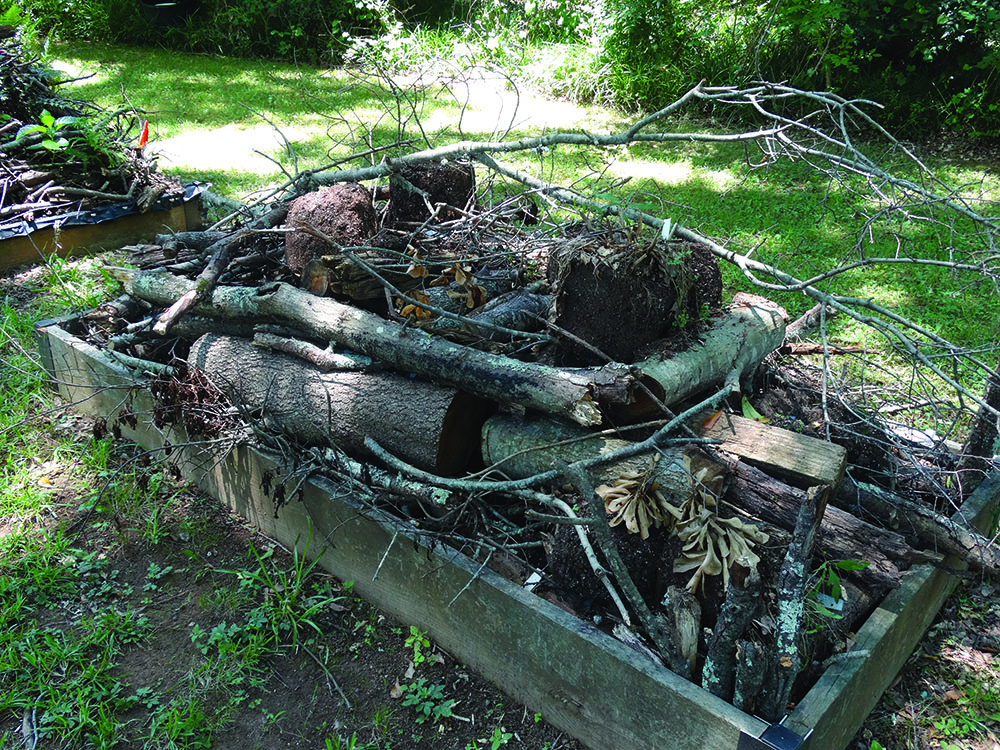Just about the time you think you have heard or seen it all when it comes to gardening, someone like Maggie comes along and throws you a curve…Hugelkultur! Now, Hugelkultur falls somewhere within that thing called ´permaculture gardening´ that cities are incorporating into city gardens and nuance organic farmers use for growing their crops and raising their livestock. In short, it uses organic gardening practices but goes beyond just that. It integrates our garden with our relationship to our environment. So, what the heck does that mean! Well, it uses the best plants for our climate, builds up the soil with little waste run-off or air pollutants, funnels rain water into the garden; and, is constantly revitalizing the earth, keeping our plants healthier and the environment cleaner.
All that being said, most of us pretty much use conventional gardening skills, one-size-fits-all method, for growing plants. I consider myself an organic gardener making my own compost, using piles of dried-up fall leaves which is the best organic material, lime to adjust soil pH, egg shells for calcium and fish oil for fertilizer. But I´m not a purest either for using a few chemicals like glyphosate for weeds in the cracks of the sidewalks and the driveway makes my life a little easier, and gives me more time for pulling weeds in the garden. But hugel gardening sounds like something I would like to try.
So, what exactly is Hugelkultur? It is a gardening technique that originated in Germany specifically for growing vegetables and has been around for a long time. It means hill culture or hill mounds and is pronounced hoo-gul-culture. It is considered a no-dig raised bed with a difference. They hold moisture, build fertility, maximize surface volume and are great spaces for growing fruits, vegetables and herbs by using decaying wood and other compostable items. It also does well in shaded areas as seen in the photo with Maggie who lives in Williamston.
The most important thing to remember is the base always starts with large logs. Then you continue to pile as high as you can with other materials such as branches, leaves, straw, paper, compost, grass clippings, roots and all from last year’s pots. All the while, adding good soil in-between the debris. And…according to Maggie, you should criss-cross the branches for added stability.
This may seem like an odd way to garden but the benefits of Hugelkultur are many: 1) It gives you more garden area when space is limited. 2) All of the decaying wood is a consistent long-term source of nutrients that can last up to twenty years or longer. 3) The growing period for vegetables is longer due to the heat generated. 4) The logs and branches act like sponges storing rainwater and releasing it during drier times. Actually, you may never need to water after the first year unless there is a long term drought. This also makes it ideal for areas lacking water supply. Note that the first year the wood is decaying; it steals a lot of nitrogen. So, be sure to add extra grass clippings or a little 10-10-10 to benefit any plants you are growing. After that, the wood starts to breakdown giving back nitrogen to the soil. Google “Hugelkultur” gardening for specifics.
So, when the same old thing isn´t working any more for you in gardening, maybe it´s time to try something new…Hugelkultur! Seeing Maggie´s hugel garden gave me a sense of wonder and Maggie an amazing feeling of accomplishment.♦




